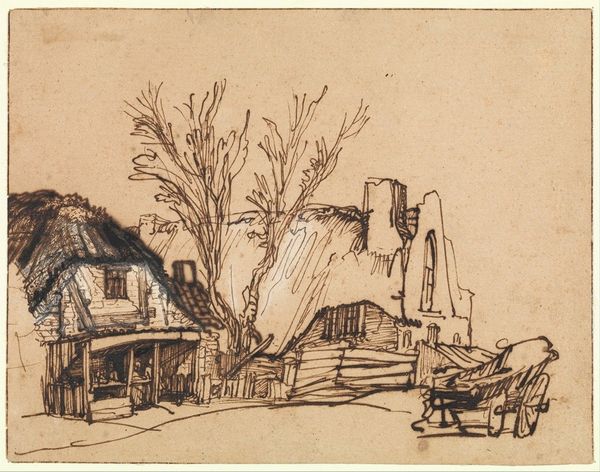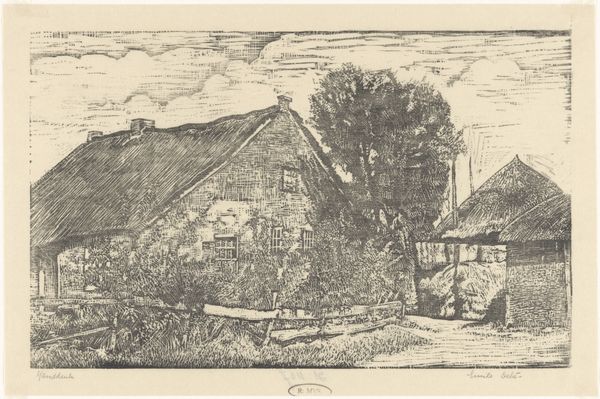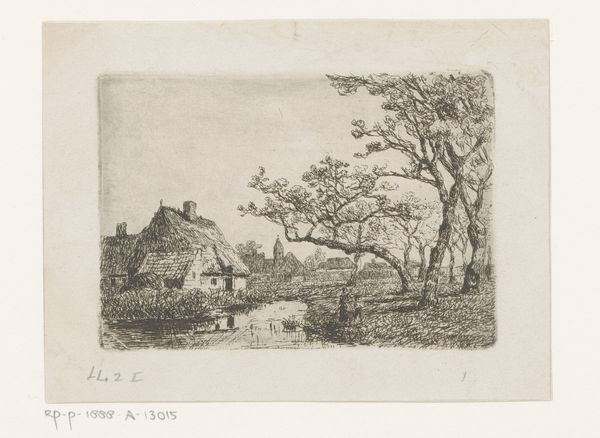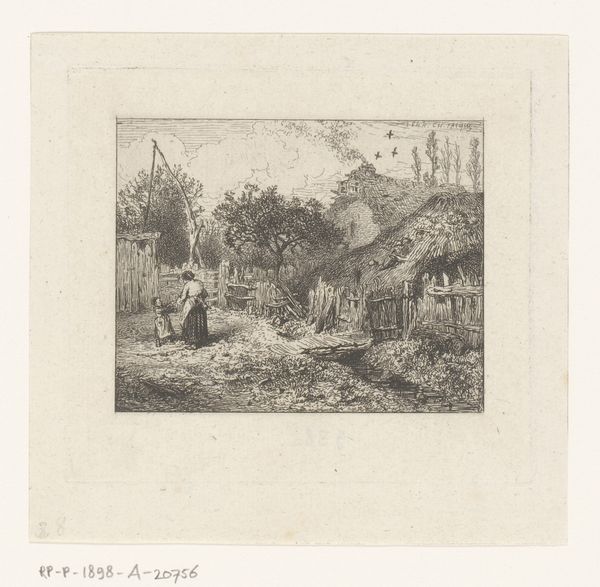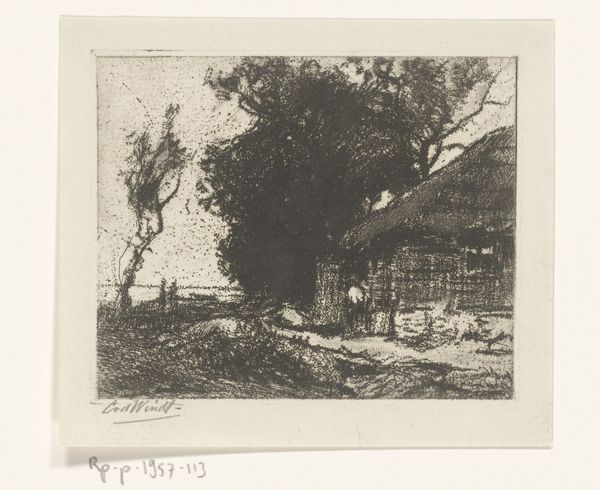
#
landscape illustration sketch
#
mechanical pen drawing
#
pen sketch
#
pencil sketch
#
personal sketchbook
#
ink drawing experimentation
#
pen-ink sketch
#
pen work
#
sketchbook drawing
#
sketchbook art
Dimensions: height 151 mm, width 146 mm
Copyright: Rijks Museum: Open Domain
Curator: Let's take a look at "Kew Side", an 1864 pen and ink sketch by Sir Francis Seymour Haden, currently held in the Rijksmuseum. Editor: Immediately, I'm struck by the intimacy of it. It feels like a candid snapshot, not something posed or idealized. There’s a lovely simplicity in the composition. Curator: Haden was quite interested in capturing the everyday experiences of people, but considering the socio-economic landscape of 19th century London, what does "everyday" really mean here? Look at the positioning of the figures and the architecture in the background. Editor: Well, there's definitely a hierarchy suggested by the receding buildings. The placement and implied activity near those buildings subtly implies labor, whereas the foreground feels almost leisurely, detached from any sense of urgent societal needs. Is Haden critiquing the ways the privileged class distanced themselves from realities of industrial labor? Curator: Precisely. The fact that Haden was a surgeon, with all the inherent class associations, influences the work. What would he have seen from his position in society? And what narratives might be subconsciously reflected? Editor: It’s interesting you mention his profession. He treats the scene with the clinical eye of someone trained to observe—each line, shadow, and object contributes to an overarching diagnosis, perhaps, of the era’s social ailments. But tell me more about the public's relationship to artwork like this at the time. Curator: Remember that art was gaining greater accessibility through institutions and reproduction techniques. Something like "Kew Side," might circulate through magazines or become accessible via exhibitions in burgeoning public galleries. Thus art begins to have a new relationship with the wider populace, impacting their awareness of different stratifications and class dynamics. It shaped perception. Editor: That’s a powerful reminder of the agency of images, and how artworks not only document moments, but participate in shaping social consciousness. The subtle commentary within the drawing becomes, in its own way, a call for reflection and even, potentially, for action. Curator: I'm reminded that artworks are active agents within these unfolding narratives, challenging audiences to think, question, and hopefully begin working towards more equitable spaces.
Comments
No comments
Be the first to comment and join the conversation on the ultimate creative platform.

